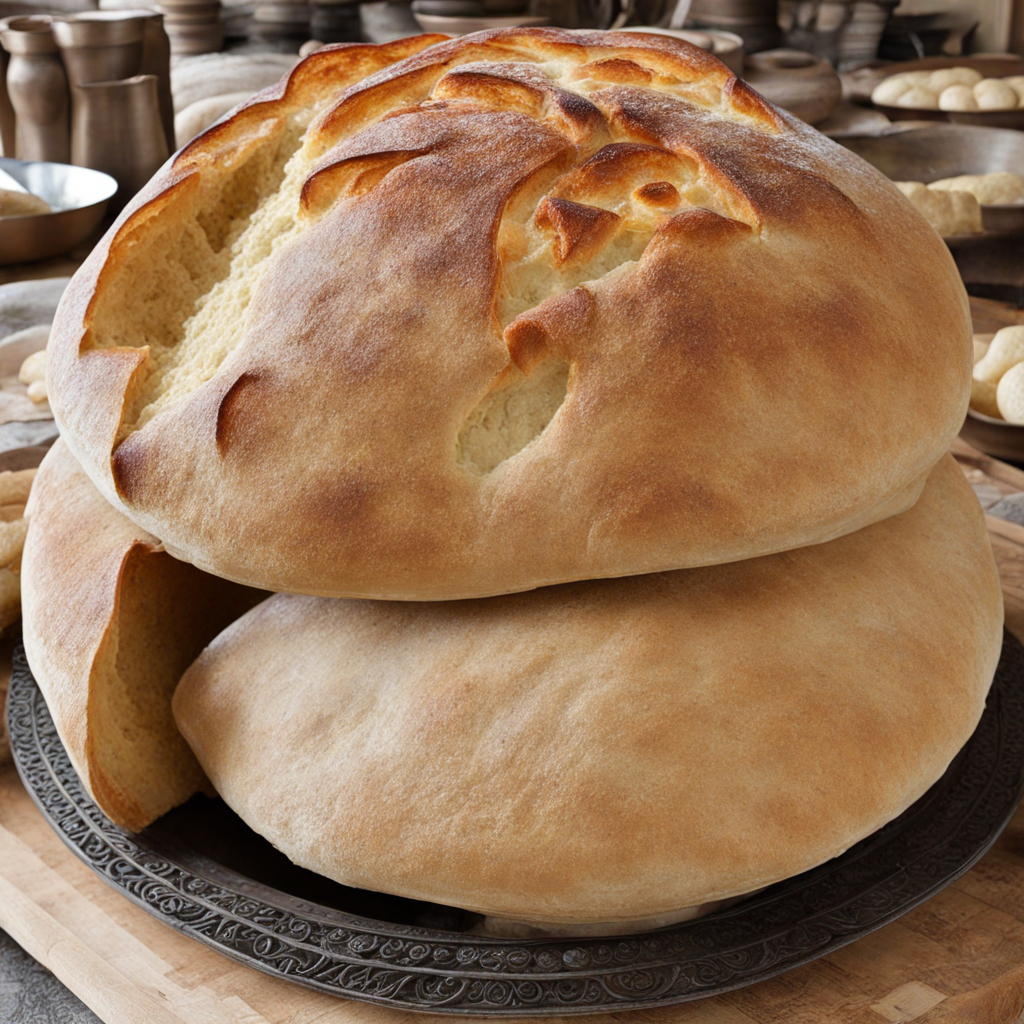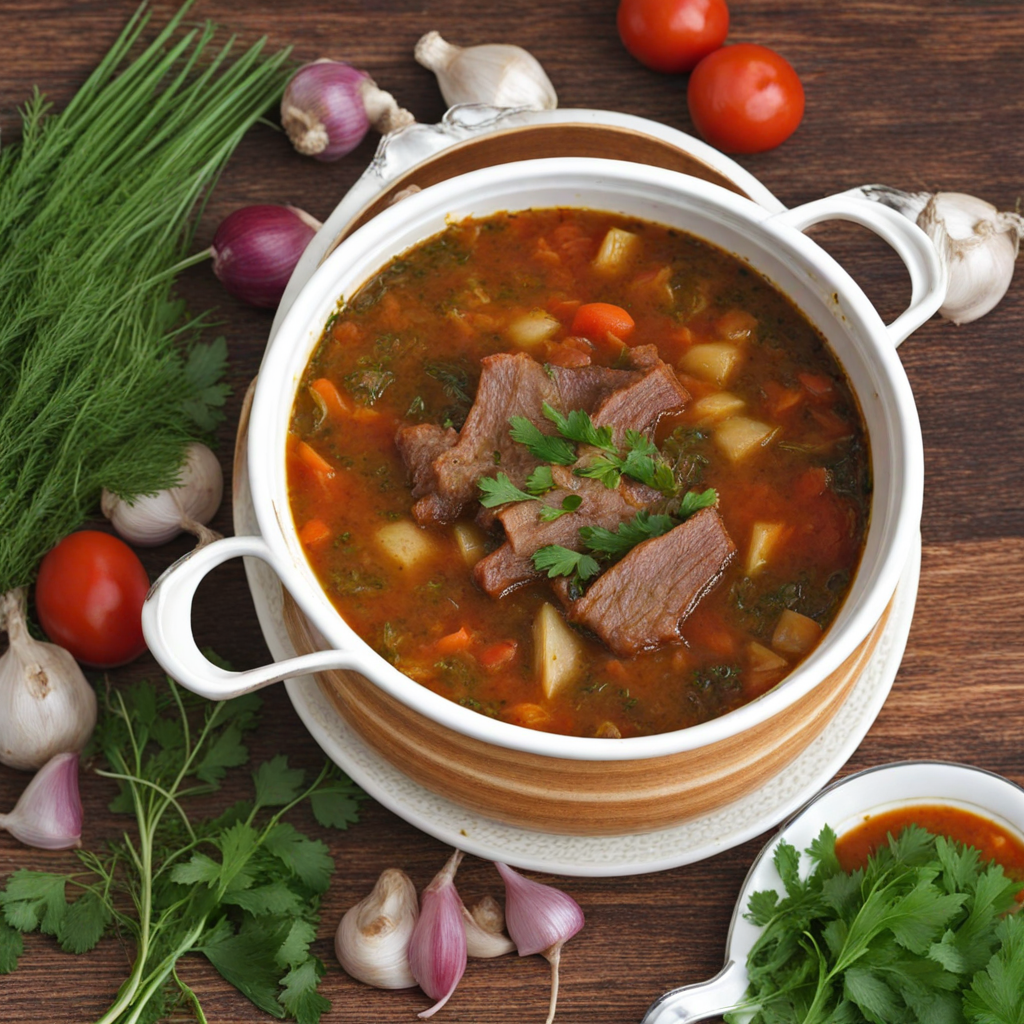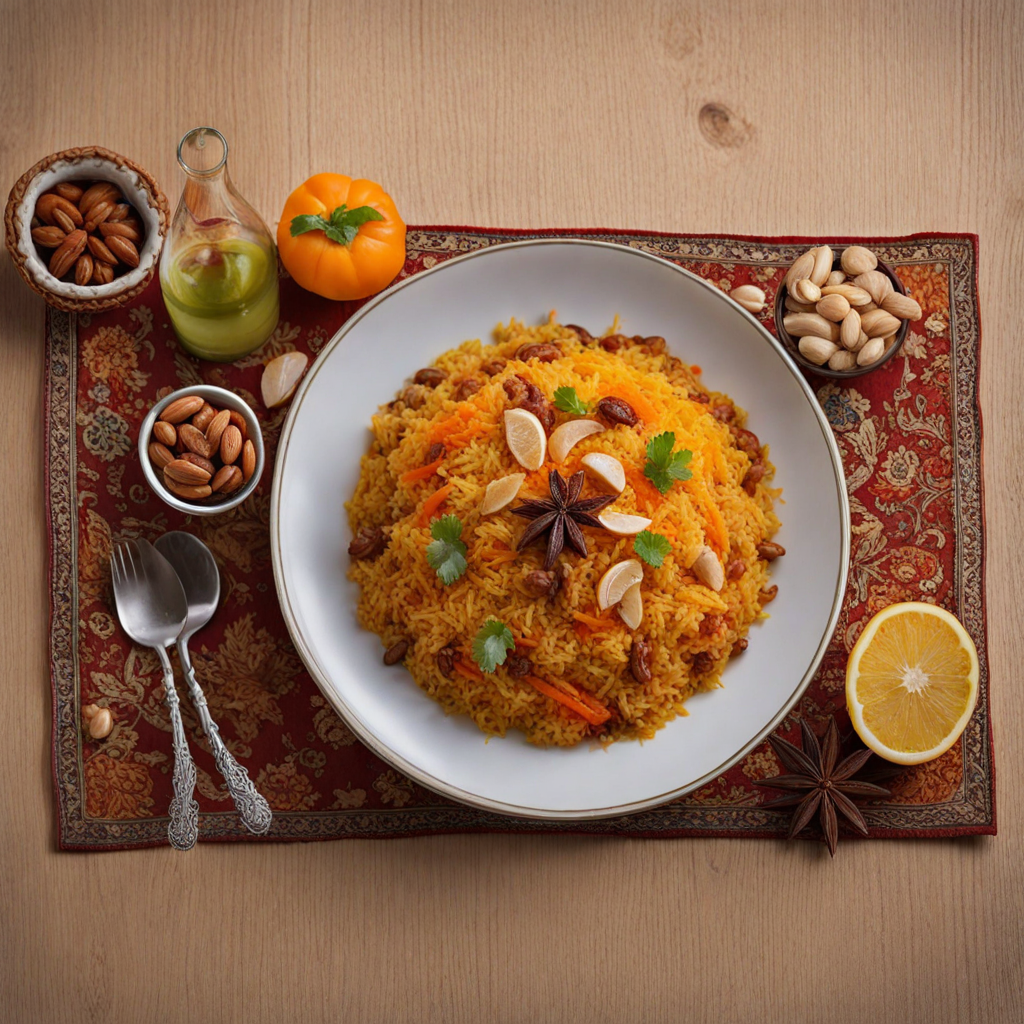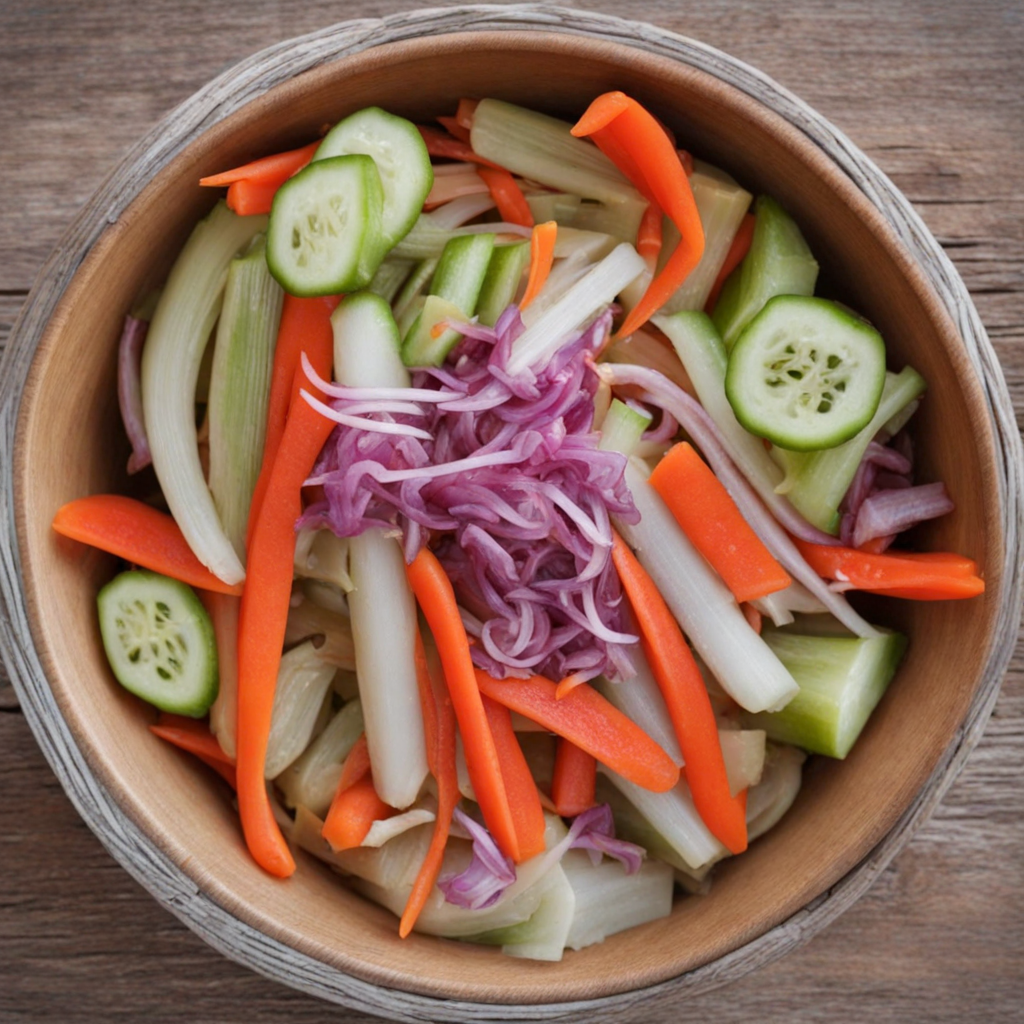Tandir Bread
Tandir Bread, or "tandir churek," is a traditional Azerbaijani bread that is renowned for its unique preparation method and distinct flavor. This delightful bread is made with simple ingredients such as flour, water, yeast, and salt, but the magic lies in how it is cooked. Traditionally, it is baked in a special clay oven called a tandir, which is heated with wood or charcoal, imparting a smoky aroma and a slightly crispy crust. The moisture and heat in the tandir create a beautifully airy interior, making each piece light and fluffy. The flavor profile of Tandir Bread is subtly complex; it has a mild, slightly nutty taste that pairs beautifully with a variety of dishes. Whether enjoyed alongside savory stews, grilled meats, or a selection of dips like yogurt or hummus, this bread serves as a versatile accompaniment that enhances the dining experience. The slightly charred exterior adds a delightful crunch, while the soft, chewy inside offers a satisfying contrast, making it perfect for tearing and sharing at the dining table. Tandir Bread is more than just a staple; it is a symbol of Azerbaijani hospitality and culture. Often served warm and fresh from the oven, it is a common feature at gatherings and celebrations. The process of baking in the tandir is not only a culinary art but also a communal activity, bringing families and friends together. With its rich heritage and comforting flavors, Tandir Bread invites you to explore the heart of Azerbaijani cuisine and savor the warmth of its traditional roots.
How It Became This Dish
The History of تنور نان (Tanur Nan) in Azerbaijan #### Origins The rich tapestry of Azerbaijani cuisine is intricately woven with traditions that have been passed down through generations, one of which is the time-honored practice of baking تنور نان (tanur nan) or tandoor bread. The word "tanur" refers to the traditional clay oven used in the baking process, a cooking method that dates back thousands of years. The origins of tanur nan can be traced to the ancient civilizations that thrived in the Caucasus region, where wheat and barley were cultivated, and bread became a staple food. Archaeological evidence suggests that the use of clay ovens for baking bread can be found in the remnants of ancient settlements across the region. The practice of baking in a tanur has been documented in various cultures, including those in Central Asia and the Middle East, leading some historians to speculate that the tradition may have spread along the Silk Road. The tanur itself is a cylindrical oven made of clay, often built into the ground, which retains heat exceptionally well, allowing for a unique cooking method that imparts a distinct flavor to the bread. #### Cultural Significance In Azerbaijan, tanur nan is more than just a food item; it embodies a vital aspect of the country's cultural identity. The bread is a symbol of hospitality and generosity, often served to guests as a sign of respect and friendship. It plays a central role in traditional Azerbaijani meals, complementing a variety of dishes from grilled meats to rich stews. The process of making tanur nan involves communal participation, often bringing families and neighbors together. Traditionally, women would gather to prepare the dough, which is made from simple ingredients: flour, water, and salt. The dough is then shaped into flat rounds and slapped against the inner walls of the pre-heated tanur. The high temperature of the clay oven causes the bread to puff up and develop a beautiful golden-brown crust, with a soft, chewy interior. Beyond its culinary significance, tanur nan is steeped in rituals and customs. For many families, the act of baking bread is a cherished tradition that marks special occasions and celebrations. It is common to serve fresh tanur nan during weddings, holidays, and family gatherings, where the fragrance of baking bread fills the air, creating a warm and inviting atmosphere. #### Development Over Time As Azerbaijan has transformed through the ages, so too has the practice of making tanur nan. Historically, the preparation and baking of tanur nan were often done in rural areas, where families maintained their own clay ovens. However, with urbanization and modernization, the traditional methods have adapted to contemporary lifestyles. In urban centers, the communal aspect of baking has evolved into a commercial endeavor, with bakeries specializing in tanur nan springing up across cities. These establishments have made it more accessible for people to enjoy fresh bread daily, while still honoring the traditional methods of preparation. While the essence of the tanur remains, these modern bakeries often incorporate innovations, such as electric or gas-powered ovens, which provide greater convenience and consistency in cooking. Despite these changes, many families still hold onto their traditional practices, and the tanur remains a common sight in rural households. The preservation of the tanur and the art of baking nan is often seen as a way to maintain cultural heritage, with families passing down their unique recipes and techniques through generations. In recent years, tanur nan has gained recognition beyond Azerbaijan's borders. The bread has become emblematic of Azerbaijani culture, showcased in international food festivals and culinary events. Efforts to promote and preserve traditional baking methods have led to a resurgence of interest in tanur nan, as chefs and home cooks alike seek to honor the heritage behind this simple yet profound food. #### Modern-Day Relevance Today, tanur nan is not just a staple food; it is a cultural icon that represents the resilience and unity of the Azerbaijani people. As Azerbaijan continues to navigate globalization, the importance of traditional foods like tanur nan has become even more pronounced. Efforts to maintain and celebrate this culinary heritage reflect a desire to connect with the past while embracing the future. The bread is celebrated in various forms, often adorned with sesame or poppy seeds, or served alongside regional dishes like kebabs and pilaf. In contemporary Azerbaijani cuisine, the versatility of tanur nan allows it to be enjoyed in numerous ways—whether as a wrap for grilled meats or simply as a side to soak up flavorful stews. Moreover, the act of baking tanur nan has found a new platform through culinary tourism, where visitors to Azerbaijan are encouraged to participate in bread-making workshops. These experiences provide insight into the process and significance of tanur nan, fostering a deeper appreciation for the traditions that have shaped Azerbaijani identity. #### Conclusion In conclusion, تنور نان (tanur nan) is a remarkable symbol of Azerbaijan’s cultural heritage, representing both the history and the spirit of the Azerbaijani people. From its ancient origins in clay ovens to its modern-day adaptations, tanur nan continues to be a beloved staple that nourishes both the body and the soul. As Azerbaijan strides into the future, the legacy of tanur nan remains strong, connecting generations through the shared experience of baking and breaking bread. This remarkable tradition, rooted in community and hospitality, encapsulates the essence of Azerbaijani culture—a testament to the enduring power of food to forge connections and tell stories across time and space.
You may like
Discover local flavors from Azerbaijan







